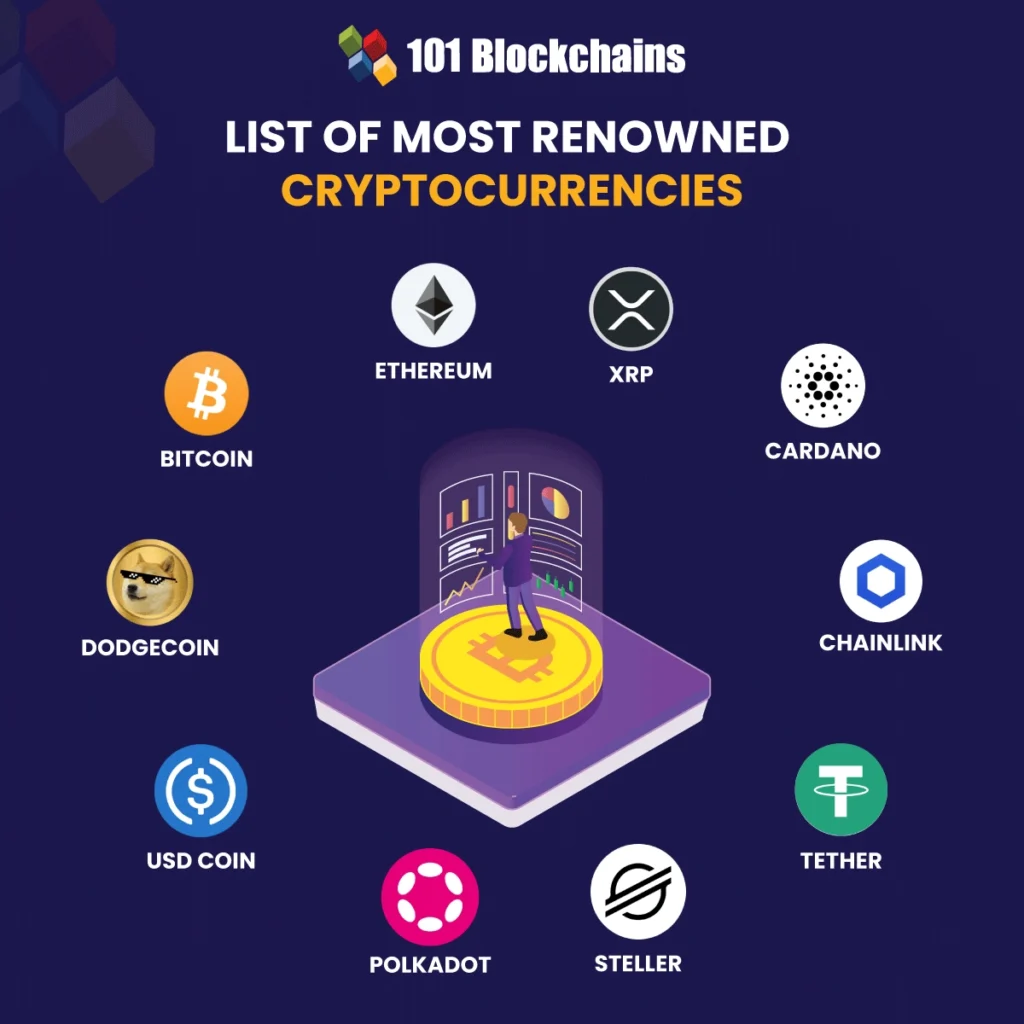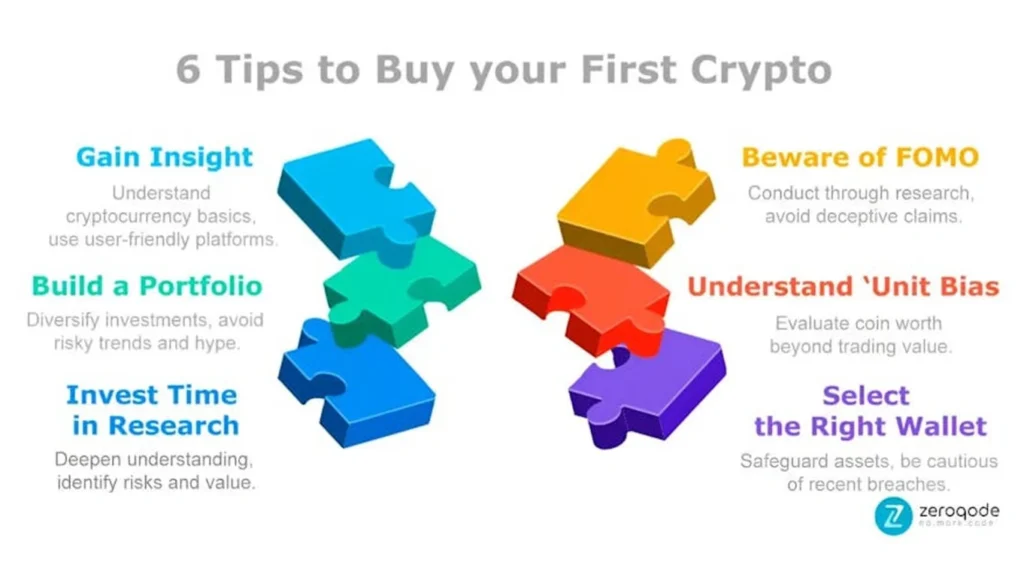A Simple Journey into Cryptocurrency for Beginners
There’s a certain moment when curiosity turns into intent. Maybe it was the friend who casually mentioned they doubled their investment in Ethereum. Maybe it was the news of Bitcoin reaching another all-time high. Or maybe it was just that itch — a nudge to understand what this whole “crypto” thing is really about. If you’re standing at the edge, wondering where to begin, you’re not alone. Cryptocurrency for beginners doesn’t have to be complicated. And this guide isn’t here to overwhelm you. It’s here to walk beside you, step by step.
Cryptocurrency for Beginners: What is Cryptocurrency, Really?

Credit from PCMag
Think of cryptocurrency as digital money that doesn’t belong to any single government or central bank. It exists only online and runs on systems designed to be open, decentralized, and secure. At the heart of it all is blockchain technology, a sort of public digital ledger. Every transaction made in the system gets recorded, verified, and linked in a chain — one block at a time.
That might sound abstract. But in practice, it’s this very system that keeps your transactions transparent, traceable, and (ideally) tamper-proof. This is what gives Bitcoin, Ethereum, and thousands of other digital currencies their credibility — not a physical coin or a vault, but a network.
For those diving in for the first time, understanding blockchain may seem like learning a foreign language. But you don’t need to speak it fluently to benefit from it. You just need to know how to start with crypto safely.
The First Step: Choosing the Right Cryptocurrency

Credit from 101 Blockchains
Ask around and you’ll hear the same few names: Bitcoin (BTC), Ethereum (ETH), and sometimes Tether (USDT) or Cardano (ADA). These aren’t just popular for no reason. They’ve stood the test of time (in crypto years, at least), showing relative stability and real-world use cases.
For beginners, starting with these more established digital currencies makes sense. They offer easier access, better security support, and a wealth of learning materials. While there are thousands of coins out there, your first experience should be about learning crypto basics, not chasing high-risk gains.
Understanding Exchanges and Wallets
Before you buy your first coin, you’ll need two things:
- A cryptocurrency exchange, where you can buy and sell coins.
- A wallet, where you’ll store them.
Exchanges are like the stock markets of crypto — digital platforms like Coinbase, Binance, or Kraken where trading happens. Some are beginner-friendly, while others offer advanced features for seasoned traders. You’ll need to sign up, verify your identity (often with documents and photos), and link a payment method.
Then comes the wallet — think of it as your crypto bank account. There are hot wallets (connected to the internet) and cold wallets (offline, often hardware-based). The latter is safer for long-term storage, while hot wallets are convenient for day-to-day use.
A beginner’s guide to understanding crypto wallets and exchanges wouldn’t be complete without this tip: never share your wallet’s private key. That string of characters is your one-way ticket to your funds. If it’s lost or stolen, recovery isn’t guaranteed.
Your First Purchase: Less Is More

Credit from Zeroqode
One of the common myths is that you need to buy a whole coin. With Bitcoin prices soaring into the tens of thousands, this myth scares off many newcomers. But the reality is, you can buy a fraction of any coin. Starting with just $20 or $50 is enough to dip your toes.
The first time you press “Buy” can feel nerve-wracking. But it’s also empowering. Your money just became digital. And with it, you’ve entered a global marketplace that never sleeps.
This is where a step-by-step guide to cryptocurrency for first-time users becomes valuable:
- Start with a small, manageable amount.
- Observe how the value fluctuates.
- Learn the rhythm of the market before committing more.
Trading vs. Holding: What Kind of Beginner Are You?
Some people buy crypto and forget about it. Others check the charts before their morning coffee. One isn’t necessarily better than the other — it’s about knowing your goals.
“HODLing”, a term born from a typo, refers to buying and holding your assets regardless of price swings. It’s common among those who believe in crypto’s long-term future.
Trading, on the other hand, is more active. You buy low, sell high (in theory), and monitor the market for opportunities. While exciting, this approach requires knowledge, strategy, and a strong stomach for volatility.
If you’re new, think of yourself as a traveler. Your early days are best spent observing, asking questions, and avoiding impulsive decisions.
Security First: Avoiding the Pitfalls
Learning how to avoid common crypto mistakes as a new investor can save you from painful lessons. Here’s what most beginners overlook:
- Using weak passwords or skipping two-factor authentication.
- Leaving coins on exchanges instead of moving them to secure wallets.
- Falling for phishing emails or fake investment platforms.
- Chasing hype without doing research.
As digital currency grows, so do scams. The key is skepticism and patience. If something sounds too good to be true — especially in crypto — it probably is.
Cryptocurrency for Beginners: Understanding Risk and Volatility
The crypto market doesn’t behave like traditional finance. It can swing 10–20% in a day without warning. For some, this volatility is part of the thrill. For others, it’s a reason to tread carefully.
Understanding your risk tolerance is critical. Don’t invest money you can’t afford to lose. View your early crypto steps as tuition — the cost of learning in a new, fast-moving world.
Real-World Uses: Why Crypto Matters Beyond Profit
While many enter for investment, cryptocurrency is about more than profit. It’s about access. In some parts of the world, it offers financial services to the unbanked. For others, it’s a tool for remittances, digital contracts, or supporting innovation in decentralized applications.
You don’t need to become a blockchain expert to appreciate this. But seeing crypto through a human lens can make the journey richer — more than just numbers on a screen.
Cryptocurrency for Beginners: A Glimpse Into What Comes Next
Eventually, you might dive deeper — exploring decentralized finance (DeFi), NFTs, staking, or earning interest on your holdings. But that’s further down the road. Right now, your journey as a beginner is about building a foundation: one wallet, one coin, one smart decision at a time.
Conclusion: Starting Small, Thinking Big
Cryptocurrency for beginners isn’t about mastering everything overnight. It’s about learning gradually, asking questions, and exploring at your own pace. From setting up your first wallet to buying your first coin, every step adds to your confidence.
In a world where digital currency is reshaping how we view money, starting your journey today — cautiously, curiously, and consciously — puts you ahead of the curve. The market will evolve, trends will shift, but your first step is what matters most.
And now, you’ve taken it.



